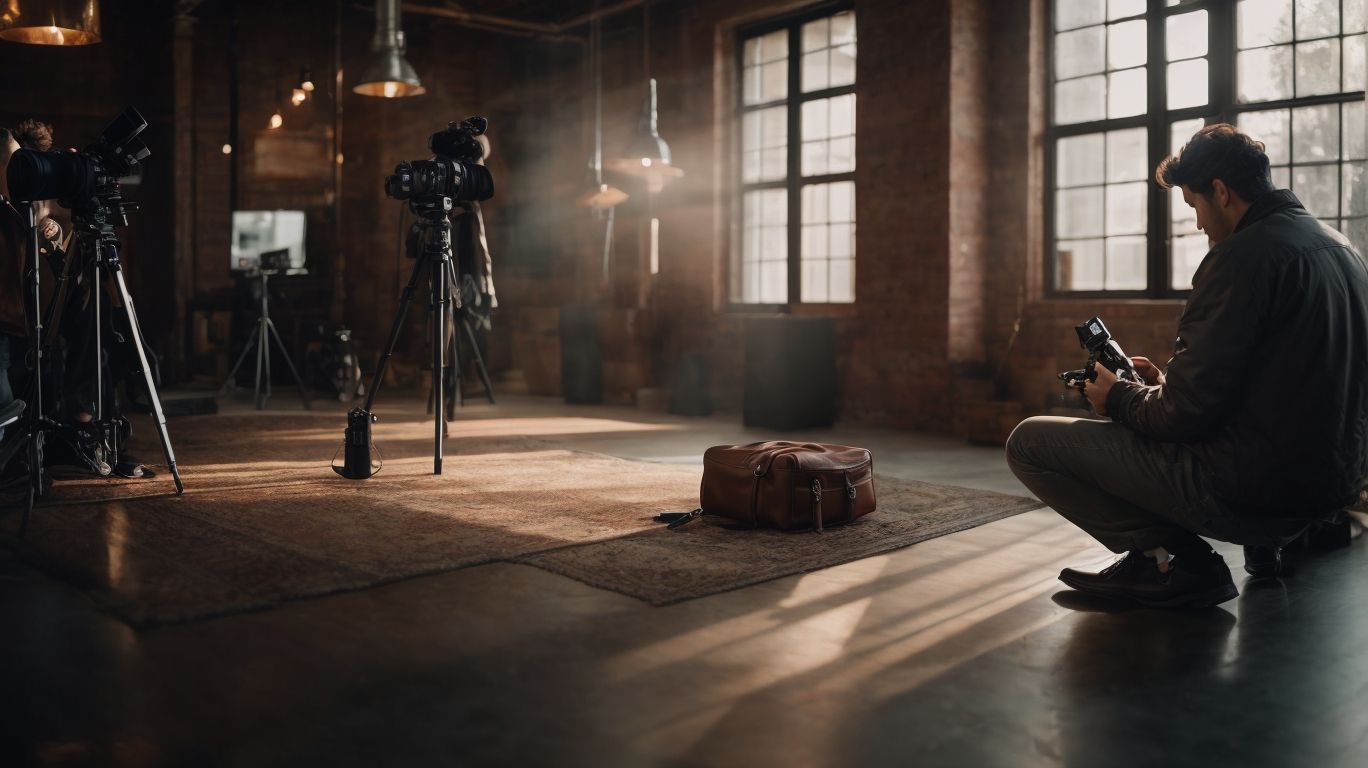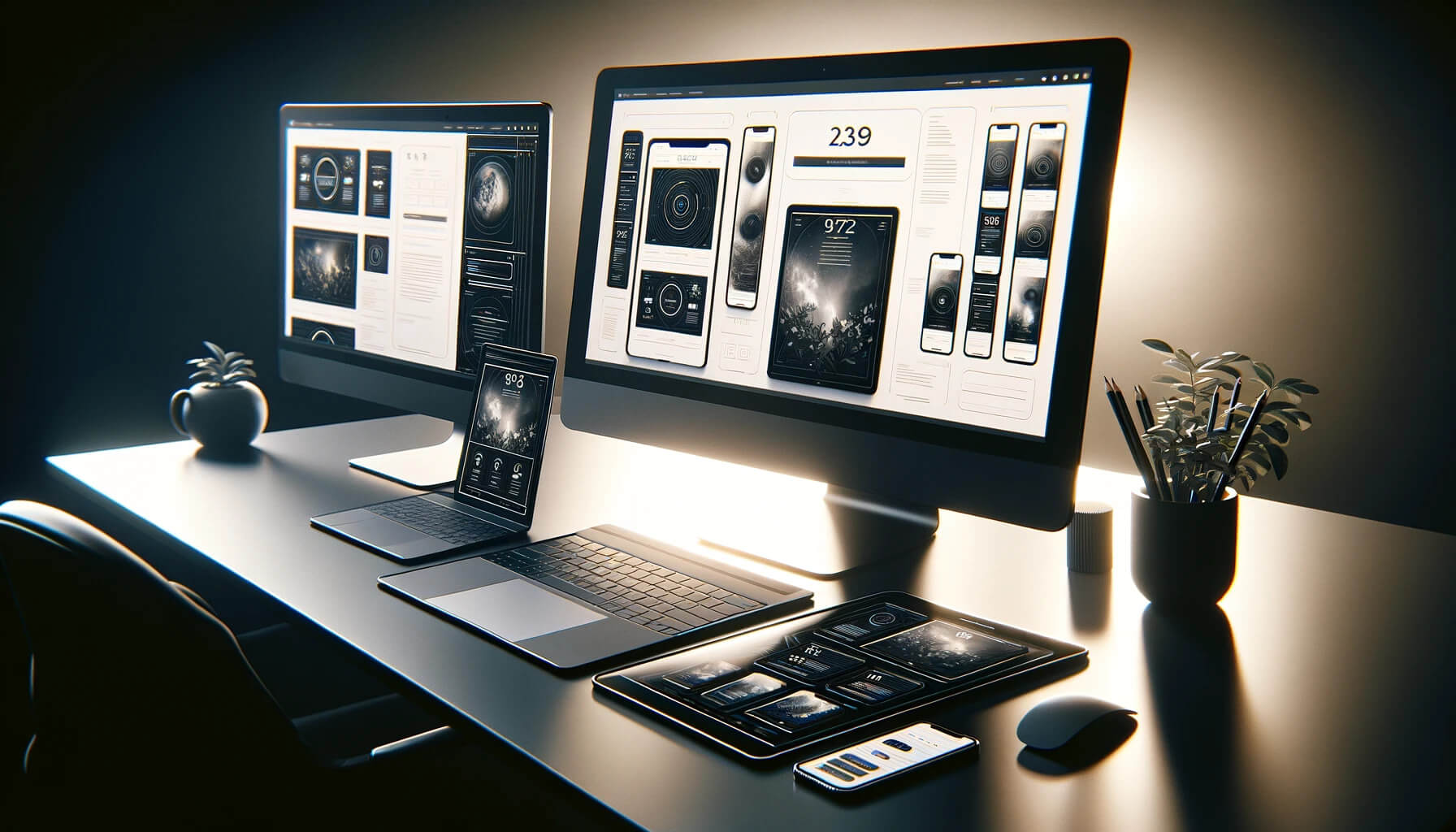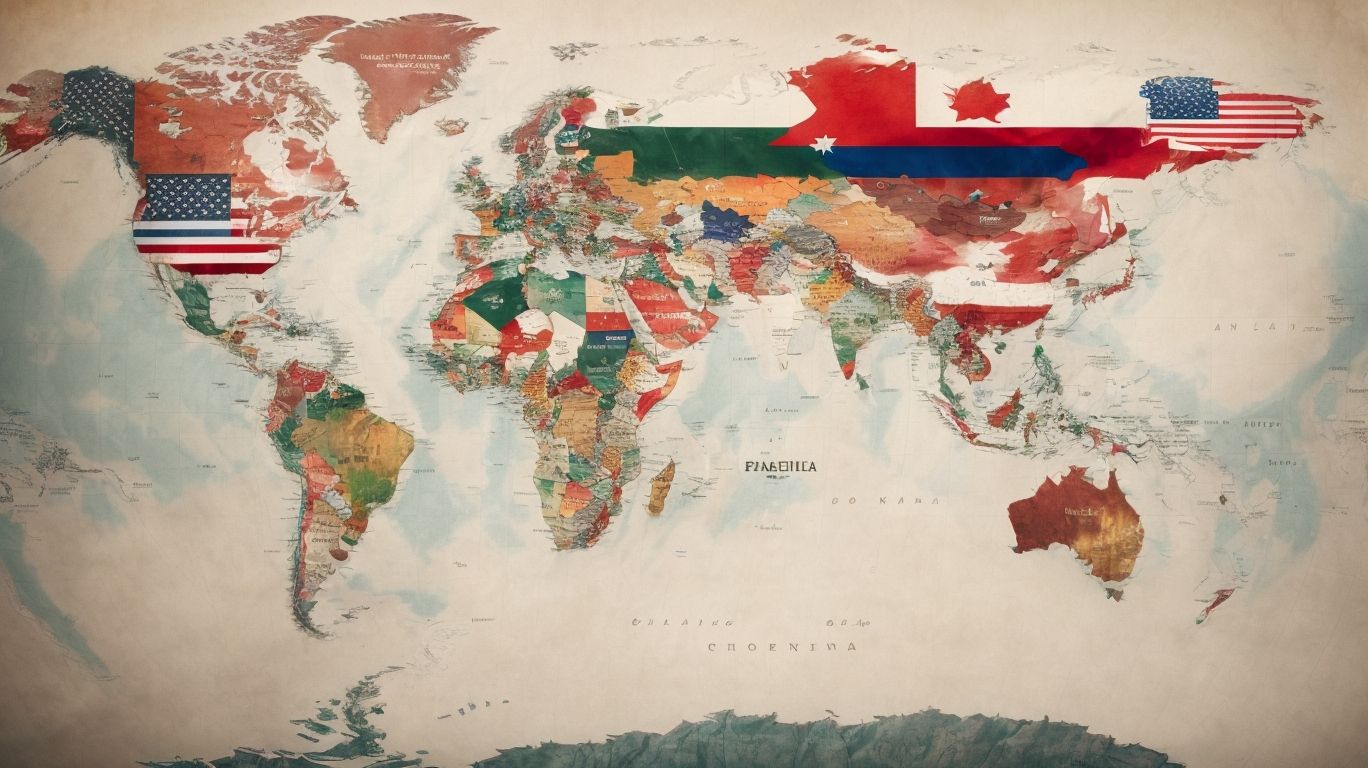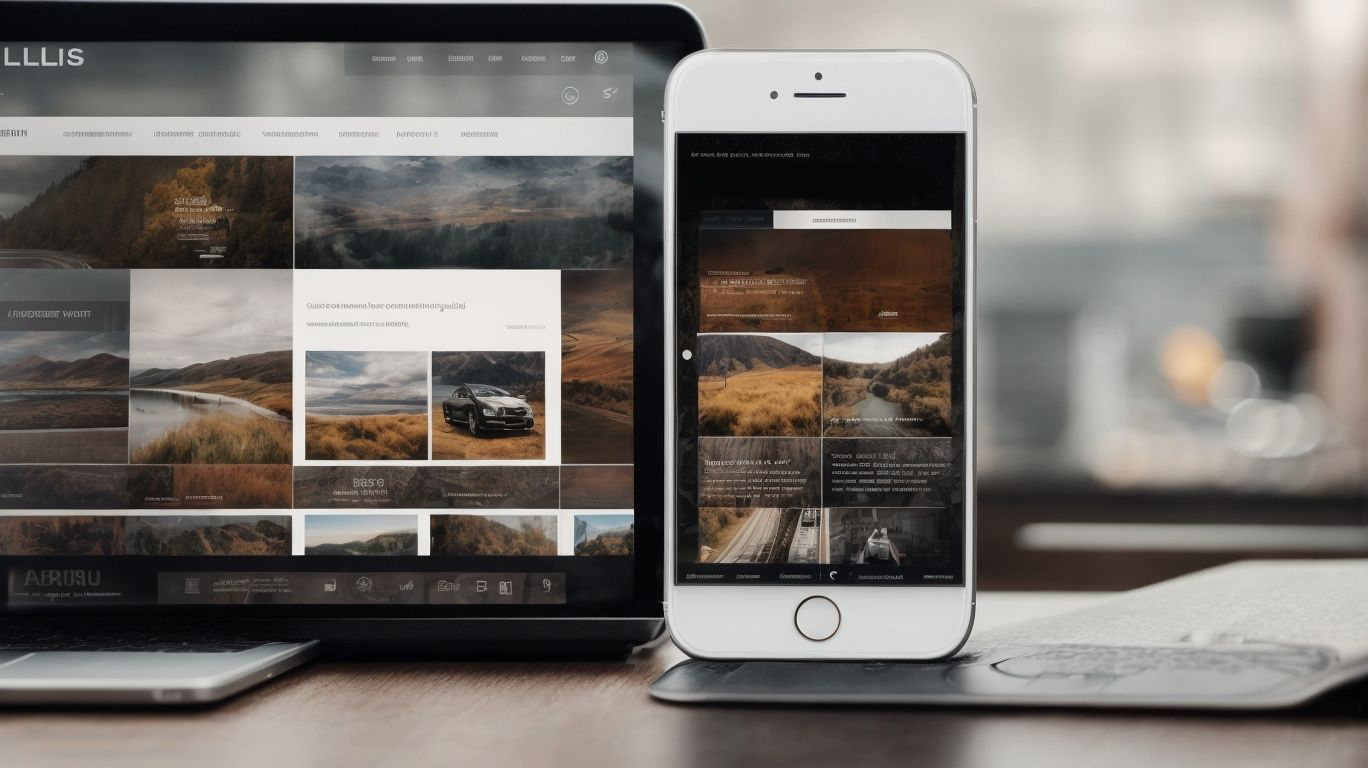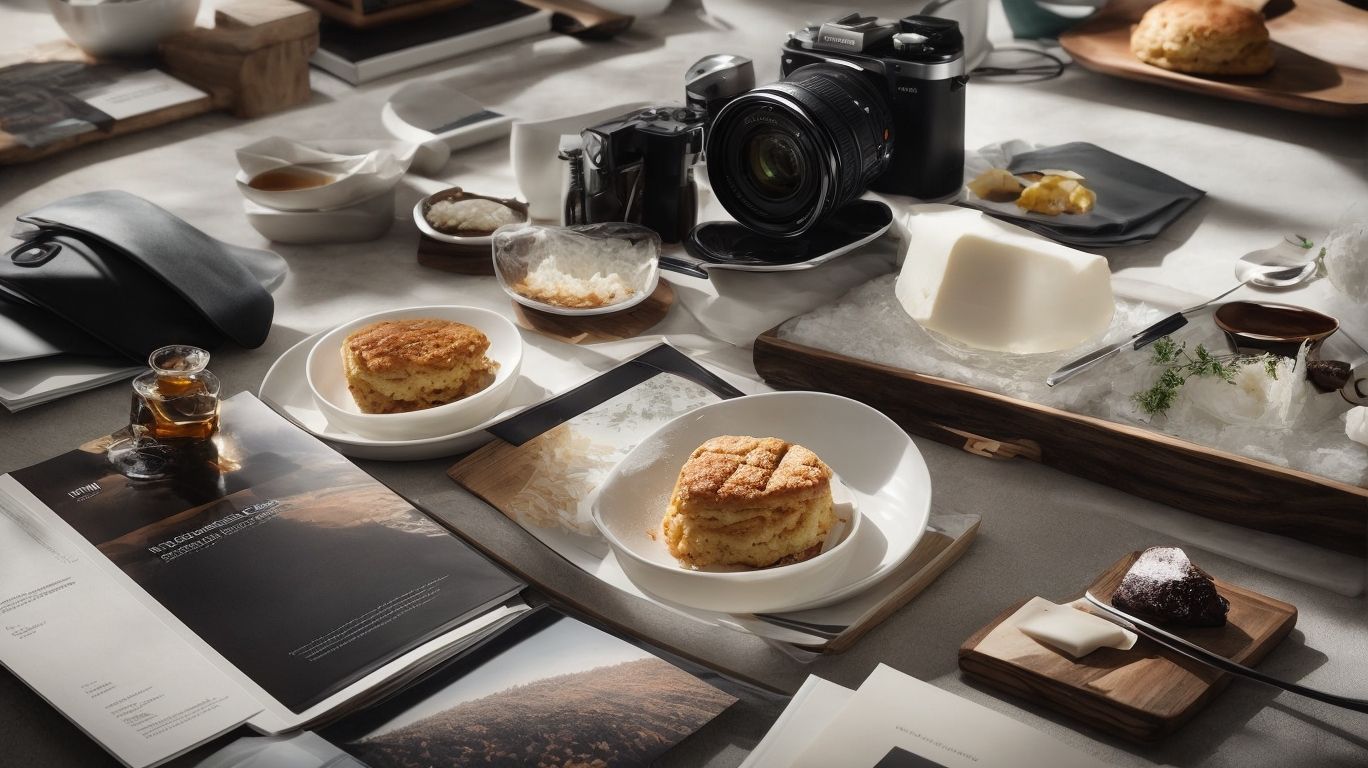In today’s digital age, the importance of high-quality website photography cannot be overstated. From increasing credibility to enhancing user experience and representing your brand aesthetics, quality images play a crucial role in the success of your website.
But what exactly makes a quality website photography? And how can you avoid common mistakes in this area? In this article, we will explore the significance of high-quality website photography, what makes a quality website photography, how high-quality photography can improve your website, and how you can improve your website photography. So, let’s dive in and discover the impact of high-quality imagery on your website!
Why Is Website Photography Important?
High-quality website photography plays a crucial role in shaping the online presence and user experience of a business. It encompasses the utilization of professional images and visuals to enhance the aesthetics of the website design, thereby influencing the branding and digital marketing efforts.
Quality photography is essential for creating a visually compelling website that captures the attention of visitors. When integrated strategically, photography can convey the brand’s story, values, and personality, making a memorable impression on the audience.
Well-crafted visuals foster a sense of professionalism and trust, which are fundamental for building a strong online identity. High-quality photography enhances user experience by making the website more engaging and interactive, ultimately contributing to higher conversion rates and customer satisfaction.
What Makes a Quality Website Photography?
High-quality website photography is defined by its ability to create a significant impact and lasting impression on visitors. It should evoke compelling visual appeal, convey authentic storytelling, and instill trust and credibility through attention to detail, creativity, and professionalism.
The role of visual storytelling in website photography is paramount, as it has the ability to captivate audiences and convey the essence of a brand. By capturing authentic moments and emotions, photography can establish a genuine connection with the viewer, evoking the desired emotional response.
Attention to detail in photography not only enhances the visual appeal but also signifies the level of professionalism and dedication of a business. A website’s visual representation is a powerful tool in shaping its online identity and influencing customer perception, making high-quality photography an essential element for businesses striving to convey authenticity and professionalism.
High Resolution
High resolution is a fundamental aspect of quality website photography, as it directly influences the impact and visual appeal of the images. It significantly contributes to enhancing customer perception, aesthetics, and brand recognition.
High-resolution images capture every detail and nuance, creating a visually immersive experience for website visitors. The crispness and clarity of these images leave a lasting impression, instilling confidence and trust in the brand.
Not only do high-resolution images portray professionalism and attention to detail, but they also reinforce the brand’s identity and make a positive impact on the viewer’s perception.
Proper Lighting
Proper lighting is essential in website photography as it directly influences the composition, visual hierarchy, and overall image quality. It significantly contributes to enhancing the aesthetics and attention to detail in the visuals.
The use of proper lighting can bring out the textures and colors in the subject, making the images more visually appealing. It helps in creating a sense of depth and dimension, adding a professional touch to the photographs.
Proper lighting also ensures that the focus is where it needs to be, guiding the viewers through the visual content in a deliberate manner. It plays a crucial role in effectively conveying the intended message and creating a memorable visual experience for the website visitors.
Composition and Framing
Composition and framing are pivotal in website photography as they contribute to the visual appeal, storytelling, and unique creativity that define a brand’s identity through visual storytelling.
The composition of an image determines how various elements are arranged within the frame, influencing the viewer’s perception and guiding their attention.
Effective framing helps to establish a cohesive visual narrative, enabling the photographer to convey a compelling story or highlight specific brand attributes. Through strategic composition and framing, website photography can capture the essence of a brand, portraying its character, values, and ethos in an impactful and memorable manner.
Authenticity and Originality
Authenticity and originality in website photography are crucial in building user trust, showcasing brand values, and representing products and services through compelling storytelling that enhances brand recognition.
When a website features authentic and original photography, it conveys transparency and sincerity to the users, fostering a sense of trust and reliability.
By capturing genuine moments and unique angles, brands can effectively showcase their values and create a more meaningful connection with their audience.
Original photography helps in accurately representing products and services, allowing customers to visualize the offerings in a realistic and engaging manner.
This approach not only contributes to brand recognition but also strengthens the overall brand identity.
Relevance to Content
The relevance of website photography to the content is essential in establishing brand identity, conveying storytelling, and representing the visual essence that contributes to brand recognition and meaningful user interaction.
Visual representation is crucial for a brand’s impact. Carefully curated images can convey values, evoke emotions, and connect with the audience. High-quality photography builds a strong identity and sets a brand apart from competitors.
Compelling photographs also improve user experience, increasing engagement and conversions on the website.
How Can High-Quality Photography Improve Your Website?
High-quality photography has the potential to significantly enhance your website by increasing credibility, improving user experience, boosting engagement, and influencing conversion rates. It also contributes to better online visibility and positively impacts consumer behavior and purchasing decisions, while supporting SEO efforts through image optimization.
Visually appealing photographs not only capture the attention of visitors, but they also convey professionalism and attention to detail.
These elements build trust and credibility, making potential customers more likely to engage with your content and ultimately make a purchase. Optimized images also play a crucial role in enhancing SEO performance, as they help improve page load times and contribute to higher search engine rankings, increasing the visibility of your website in online searches.
Increases Credibility
High-quality photography increases the credibility of a website by fostering trust, conveying authenticity, and presenting a professional visual representation that contributes to brand recognition and positively influences consumer perception.
High-quality images are crucial for creating a strong first impression on a website. They convey professionalism and attention to detail, reflecting positively on the brand’s reliability and meticulousness. Additionally, clear and captivating visuals engage visitors, encouraging them to stay on the site longer and explore its content. By using authentic imagery, a website can also build a connection with its audience, showcasing transparency and enhancing the overall user experience.
Enhances User Experience
High-quality photography enhances the user experience by elevating aesthetics, creating visual appeal, conveying compelling storytelling, and evoking emotional impact that fosters meaningful user interaction.
By invoking emotions, creating a sense of authenticity, and enhancing overall engagement, high-quality photography allows users to connect with the brand or product on a deeper level. Through captivating imagery, users are drawn into the narrative, resulting in a more immersive and memorable interaction with the content.
Furthermore, the use of high-quality photography can positively impact a user’s perception of a brand or product. This can ultimately influence their decision-making process and drive higher conversion rates.
Attracts and Engages Visitors
High-quality photography attracts and engages visitors by presenting attention-grabbing visuals that create a strong visual impact, contributing to better online visibility and increased user engagement.
Visitors are drawn to websites and social media platforms that showcase stunning photography because it conveys professionalism, creativity, and attention to detail.
When presented with high-quality visuals, visitors are more likely to stay on the site longer, browse through various pages, and ultimately make a purchase or take a desired action. It also helps in elevating the brand image and creating a memorable experience that resonates with the audience, leading to improved user engagement and a greater likelihood of return visits.
Represents Your Brand Aesthetics
High-quality photography represents your brand aesthetics by contributing to the visual representation that defines your brand identity, providing a competitive edge, and enhancing brand recognition through compelling visual content.
Professional photography is a powerful tool for showcasing your brand’s unique essence and values. It captures the attention of your audience and fosters emotional connections, leaving a lasting impression. With the right imagery, your brand can stand out in a crowded market and attract potential customers.
Consistent and high-quality visual content also reinforces brand recognition, creating a cohesive and memorable brand image across different platforms and marketing materials.
What Are the Common Mistakes in Website Photography?
Common mistakes in website photography include using low-quality images, incorporating irrelevant or overused stock photos, and neglecting proper image optimization for web usage.
This can have significant implications for a website’s overall appeal and user experience. Low-quality images can diminish the professional look and feel of a website, potentially deterring visitors and impacting brand credibility.
Overused stock photos can make a website appear generic and unoriginal, failing to convey the unique identity of the business. Proper image optimization is crucial for web usage, as it affects page load times and search engine rankings, ultimately influencing the site’s visibility and performance. Addressing these photography mistakes is essential for creating a visually engaging and effective website.
Using Low-Quality Images
Using low-quality images in website photography can negatively impact customer perception, diminish visual appeal, and undermine the professionalism that influences user trust.
This may lead to a lack of credibility for the website and can result in potential customers being hesitant to engage with the brand.
Poor quality images can also create a negative impression of the products or services being offered. They can hinder the overall user experience by making it difficult for visitors to fully understand and appreciate the content on the website.
Ultimately, this can lead to decreased user engagement and a higher bounce rate, impacting the website’s performance and conversion rates.
Irrelevant or Overused Stock Photos
Incorporating irrelevant or overused stock photos in website photography can compromise authenticity, detract from originality, and undermine the brand representation that defines the visual identity.
The use of generic stock photos can lead to a lack of connection with the audience, as they may convey a detached or insincere message. It also hinders the establishment of a unique brand identity, as audiences may perceive the company as unoriginal or lacking in creativity.
Overused stock photos can dilute the distinctive qualities of a brand’s image, making it difficult for the audience to differentiate the company from its competitors. As a result, utilizing such images may weaken the overall impact of the website and compromise the effectiveness of its visual storytelling.
Poorly Composed Images
Poorly composed images in website photography can disrupt visual hierarchy, detract from storytelling, and compromise the overall composition, impacting the aesthetics and visual appeal.
This can lead to a lack of clarity and cohesiveness within the website design, causing confusion for the audience and potentially driving them away. It can diminish the professionalism and credibility of the brand, as poorly composed images may convey a lack of attention to detail.
These images may fail to effectively communicate key messages or evoke the desired emotional response from the viewers, ultimately hindering the website’s ability to engage and retain visitors.
Not Optimized for Web
Not optimizing images for web usage in website photography can lead to increased load times, diminished website performance, and larger image file sizes that impact user experience.
This can result in frustrating user experiences, as visitors may encounter slow page loading, leading to decreased engagement and potential loss of business opportunities.
Larger image file sizes can consume more bandwidth, impacting mobile users and those with limited data plans. Neglecting image optimization can ultimately hinder search engine rankings, as slower websites are penalized in search results, affecting overall online visibility and traffic.
How Can You Improve Your Website Photography?
To optimize readability and SEO, it’s advisable to break paragraphs into concise, easily digestible sentences. Add
tags to the text given and aim for a maximum of two sentences per
tag section, allowing multiple
tags. This approach enhances user experience and search engine indexing. Also, add tags to important keywords and phrases, and tags for quotes.
Improving your website photography involves investing in high-quality equipment, engaging a professional photographer, utilizing authentic and relevant images, and prioritizing image optimization for web usage.
Investing in high-quality equipment can make a significant difference in the overall quality of your website photography. Professional-grade cameras, lighting equipment, and lenses can capture stunning images that engage your audience.
Collaborating with a professional photographer can bring a unique perspective and creativity to your website’s visual content. Using authentic and relevant images helps in creating an authentic connection with your audience, while optimizing images for web usage ensures faster loading times and enhances user experience on your website.
Invest in High-Quality Equipment
Investing in high-quality equipment for website photography significantly contributes to enhancing image quality, improving lighting and composition, and facilitating efficient image editing processes.
Investing in quality equipment is crucial for capturing images with exceptional clarity and detail. Professional-grade cameras, lenses, and lighting setups ensure that products or services featured on a website are portrayed in the best possible light.
With advanced equipment, photographers have better control over light and shadows, resulting in more appealing and professional-looking compositions. Additionally, high-quality gear streamlines the post-production process, making it easier to edit, retouch, and enhance images, ultimately elevating the overall visual appeal of the website and captivating the audience.
Hire a Professional Photographer
Hiring a professional photographer for website photography ensures access to expertise, creativity, and unique perspectives, while also addressing image rights and usage considerations.
Their expertise extends to understanding the technical aspects of photography, such as lighting, composition, and editing. This ensures that your website images are of the highest quality.
Professional photographers often have a keen eye for capturing visual storytelling and conveying the essence of your brand or products through compelling imagery. They are also well-versed in addressing image rights and usage considerations, safeguarding your business from potential legal issues related to copyright and licensing.
By enlisting their services, you can enhance the overall visual appeal and professionalism of your website, leaving a lasting impression on your visitors.
Use Authentic and Relevant Images
Utilizing authentic and relevant images in website photography effectively contributes to brand representation, compelling storytelling, and engaging visual content that resonates with the target audience.
It’s essential to understand the impact of these images on the overall user experience. By incorporating authentic visuals, a brand can create a genuine connection with its audience, conveying its values and personality.
Relevant images can enhance the storytelling aspect of a website, evoking emotions and capturing the audience’s attention. This, in turn, can lead to increased engagement and a stronger association between the brand and its customers.
Optimize Images for Web
Optimizing images for web usage in website photography involves implementing image SEO practices, incorporating relevant image metadata, and ensuring compatibility with responsive design for enhanced user experiences.
This process begins with selecting the right file format for images, such as JPEG or PNG, to balance quality and file size.
Resizing images to the optimal dimensions for web display is crucial for faster loading times. Compressing images without compromising quality further improves loading speed without sacrificing visual appeal.
Adding descriptive alt text to images not only enhances accessibility but also contributes to SEO. Leveraging responsive design ensures that images adapt to various screen sizes, maintaining a seamless user experience.
Frequently Asked Questions
What is the significance of high-quality website photography?
High-quality website photography is crucial for creating a professional and visually appealing online presence for your business or brand. It can help enhance the overall design of your website and make a lasting impression on your visitors.
How can high-quality website photography benefit my business?
High-quality website photography can benefit your business in many ways. It can grab the attention of potential customers, showcase your products or services in a positive light, and help establish trust with your audience.
What makes a photograph considered to be high-quality?
A high-quality photograph is one that is clear, well-composed, and visually appealing. It should accurately represent the subject and be of a high enough resolution for web use. Lighting, angles, and editing also play crucial roles in creating a high-quality photograph.
Can I use stock photos for my website instead of hiring a professional photographer?
While stock photos may be convenient and cost-effective, they may not accurately represent your brand or products. Hiring a professional photographer can help you create unique, high-quality images that are tailored to your specific needs and vision.
How can I ensure that my website photography is of high quality?
To ensure high-quality website photography, it’s important to work with a skilled photographer who understands your brand and can capture images that align with your vision. You should also invest in quality equipment and consider factors such as lighting and composition.
What is the impact of low-quality website photography?
Low-quality website photography can negatively affect your brand’s image and credibility. It can also turn potential customers away and make your website appear unprofessional. Investing in high-quality website photography can help avoid these negative effects and elevate your online presence.
